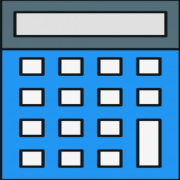
Are you wondering about LinkedIn's "Open to Work" Feature: A Good Idea or Not? Did you know it can increase your profile views by recruiters? In this article, we explore the benefits and downsides to help you make an informed choice.
Discover if it’s right for your job search.
Key Takeaways
- LinkedIn’s "Open To Work" was launched in June 2020 and has over three million users.
- Profiles with the banner are 40% more likely to get messages from recruiters.
- Users see a 20% increase in messages from their connections when they use the feature.
- You can choose to show the banner to everyone or only to recruiters to protect your privacy.
- Optimize your profile and communicate clearly to get the best job matches.
Understanding the "Open To Work" Feature
LinkedIn’s "Open To Work" feature lets you signal that you’re searching for a new job. You can control who sees this status, helping you connect with the right hiring managers.
Definition and Functionality
The "Open To Work" feature lets LinkedIn members show a green #OpenToWork banner on their profile. It was launched in June 2020 during the COVID-19 pandemic. Since then, over three million users have added the frame to signal they are job seekers.
This banner helps job hunters highlight their employment status to recruiters and hiring managers.
Users can control who sees their Open To Work status. They can choose to share it with only recruiters or everyone on LinkedIn. This flexibility allows job seekers to protect their privacy while attracting new job opportunities.
By displaying their availability, members can receive more recruiter messages and connect with potential employers.
Visibility Options
Users can choose who sees their "Open To Work" status. One option makes it visible to everyone on LinkedIn. This can increase your chances of finding a new role. Another choice limits visibility to only recruiters.
This helps keep your job search private from your current company. Even with these settings, LinkedIn cannot promise complete privacy. Users with the green banner are 40% more likely to receive messages from recruiters.
Visibility settings are key to balancing your job search and current role.
LinkedIn recommends detailing job types and preferences. This improves how you appear in recruiter searches. While the feature boosts your profile, be aware of privacy concerns. Some may worry about how their current employer views their status.
Choosing the right visibility option is essential for a successful job hunt.
Pros of Using "Open To Work"
Turning on "Open To Work" helps recruiters notice your LinkedIn profile. It also grows your network and boosts your confidence.
Increased Visibility to Recruiters
Displaying the "Open to Work" banner boosts your LinkedIn profile's visibility. Users with the banner are 40% more likely to receive InMails from recruiters. This feature enhances your chances of job leads by making your status clear to the LinkedIn community.
Furthermore, enabling "Open to Work" results in a 20% increase in messages from your connections. Recruiters actively seeking qualified candidates find it easier to reach out, doubling the number of InMails you receive.
This increased exposure aligns your job search strategy with the job market, attracting more recruiter outreach and potential job offers.
Networking Opportunities
Using LinkedIn’s open to work feature can open many doors. When you enable it, you may see a 20% increase in messages from your connections. This boost helps you connect with people you might not reach otherwise.
Smaller companies often find this feature useful. Angelina Darrisaw points out that they get noticed more easily. Your LinkedIn network becomes more active, creating chances to meet new contacts and learn about jobs.
Networking is about planting relations and letting them grow over time. – Unknown
These new connections can guide you toward your career goals and introduce you to opportunities you hadn’t considered yet. Moving forward, let’s explore how this feature can also boost your confidence.
Confidence Boost
Wearing the "Open to Work" banner can lift your spirits. It shows you’re ready for new job titles. A LinkedIn poll in November 2023 found that most recruiters see the #OpenToWork badge in a good light.
This positive view helps reduce job hunting stress. Jenny Foss and Peter Newfield say using the feature no longer feels embarrassing.
Seeing the badge can also strengthen your professional brand. It lets your network know you’re seeking opportunities. This visibility can lead to more private messages from recruiters.
Feeling supported by your network boosts your confidence. Embracing the feature helps you stay positive during your job search.
Targeted Job Matches
Moving from a confidence boost, the "Open To Work" feature helps you find jobs that fit you well. By specifying your job types and preferences, LinkedIn's algorithm can show you targeted job matches.
This makes your job search more efficient. James Hudson notes that setting your status to recruiters-only can increase your reach by 40%. With a well-established network, LinkedIn recruiters can better connect you to roles in your target field.
This focused approach attracts the right opportunities, making your job hunt smarter and more effective.
See also: Top 8 Job Portals in UAE
Cons of Using "Open To Work"
While "Open to Work" can help you get noticed, it also has some downsides worth considering. Read on to learn more.
Perceived as Unemployed or Desperate
Using LinkedIn's "Open To Work" banner can make some think you are unemployed or desperate. José Marchena points out that many recruiters have biases against candidates without jobs.
He suggests not using the banner to avoid this stigma. Nolan Church, a former Google recruiter, also warns that top talent usually isn't actively job hunting. He feels the banner can be a red flag for employers looking for strong candidates.
Displaying the 'Open To Work' banner might signal to some employers that you are in a vulnerable position, says Nolan Church.
These perceptions can affect how your well-established network views you. It might make some connections question your current job status or your confidence in your skills. Moving forward, it’s important to consider how your current employer might see the banner.
Current Employer's Perception
Using the "Open To Work" feature can make your current employer see that you're looking for new opportunities. Even with LinkedIn's privacy measures, your boss might spot the open to work banner on your profile photo.
This could change how they view you at work. Some managers might think you are unhappy or planning to leave. Angelina Darrisaw points out that smaller companies gain more from the banner by attracting recruiters.
Still, there is a chance your employer notices your job search status. Be mindful if you prefer to keep your job hunt private.
Risk of Spam Messages
Marking your profile with LinkedIn's "Open to Work" can lead to many spam messages. Recruiters might send offers that don't match what you're looking for. Career strategist Donna Serdula says this feature can hurt your personal brand.
You may receive unwanted messages that clutter your inbox and waste your time. The risk of spam messages can make your job search more difficult and frustrating.
Privacy Concerns
LinkedIn’s "Open To Work" feature helps job seekers show they’re available. However, privacy is a concern. Even with LinkedIn's privacy settings, your current boss might still see your status.
Career strategist Donna Serdula warns that this can affect your personal brand. Some recruiters might misuse your information, leading to unwanted spam messages. There’s also a risk of employment scams targeting active users.
Balancing visibility and privacy is tricky, making it essential to weigh these risks before using the feature.
Useful: 20 Best Companies to Work for in Dubai
Tips for Using "Open To Work" Successfully
Begin by updating your LinkedIn profile to highlight your strengths and achievements. Then, engage with your connections to draw the attention of recruiters and expand your network.
Optimize Your LinkedIn Profile First
Make your LinkedIn profile strong before using the "Open To Work" feature. Use a clear profile picture that shows you in a professional light. Write a headline that highlights your skills and the jobs you want.
Add details about your experience and education to complete your profile. LinkedIn recommends specifying job types and preferences to improve visibility to recruiters.
Include information about the roles you are seeking and set your preferences carefully. This helps LinkedIn match you with the right opportunities. A well-optimized profile can attract recruiters privately and give you better job matches.
Career Directors International note that having a complete profile makes the "Open To Work" feature more effective. Focus on personal branding to stand out in the job search process.
Use Targeted Communication
Tailor your messages on LinkedIn's Open to Work feature. Specify the job types you want and your preferences. This makes it easier for recruiters to find you. Career coach Donna Serdula advises against a one-size-fits-all approach.
Clear communication shows what you are looking for and helps align your profile with the right opportunities.
Using targeted communication connects you with the right staffing teams. Former recruiters appreciate when candidates have specific goals. Include keywords related to your field, such as particular skills or job titles.
This approach reduces unwanted messages and leads to better job matches. Focused writing increases your chances of finding a job that fits your desires.
Be Active and Engaged on LinkedIn
After refining your message, staying active on LinkedIn can make a big difference. Share updates, comment on posts, and join groups to expand your well-established network. Using the open to work frame on your photo attracts recruiters' attention.
Being active can lead to a 20% increase in messages from connections. This boost helps especially during job-hunting. LinkedIn supports those using the banner, fostering empathy and understanding.
Engage regularly to connect with potential employers and opportunities.
Related: How to Announce a New Job on LinkedIn
Conclusion
Using LinkedIn's "Open To Work" can help you get noticed by recruiters and grow your network. It shows you're ready for new opportunities without shouting it from the rooftops. However, some worry it might signal desperation or raise privacy flags.
Weigh the benefits against the risks to decide what's right for you. Your job search is personal, so choose the path that feels best for your journey.
FAQs
1. Is LinkedIn's 'Open To Work' feature a good idea or not?
LinkedIn's 'Open To Work' feature is increasingly popular among job seekers. It adds a photo frame to your profile, letting your well-established network know you're looking. While it can help you find new opportunities, some worry it might lead to job loss fears or unconscious bias from employers.
2. How does the 'Open To Work' feature impact my job search?
When LinkedIn rolled out 'Open To Work,' it sparked an open debate. The feature can directly align with finding a new job by making you visible to recruiters. However, some say managing the photo frame is time-consuming. Balancing these factors helps decide if it's a good idea for you.
3. Can using 'Open To Work' cause unconscious bias?
Yes, displaying the 'Open To Work' photo frame might lead to unconscious bias. Some recruiters may view you differently knowing you're seeking a new role. It's important to consider this when deciding whether to use the feature, weighing the benefits against potential biases.
4. Does 'Open To Work' work with video resumes or other platforms like Facebook?
'Open To Work' is designed for LinkedIn and can complement a video resume by adding a visual indicator to your profile. It doesn't directly integrate with other platforms like Facebook, but it leverages your LinkedIn network to enhance your job search efforts.
5. Is managing the 'Open To Work' feature time-consuming?
Setting up 'Open To Work' is simple, but keeping your profile active and engaging with your network can take time. Some users find it time-consuming, while others believe the effort pays off by connecting them with better job opportunities. Consider your schedule to decide if it's right for you.
Read also: How to Get a Job in Dubai?
